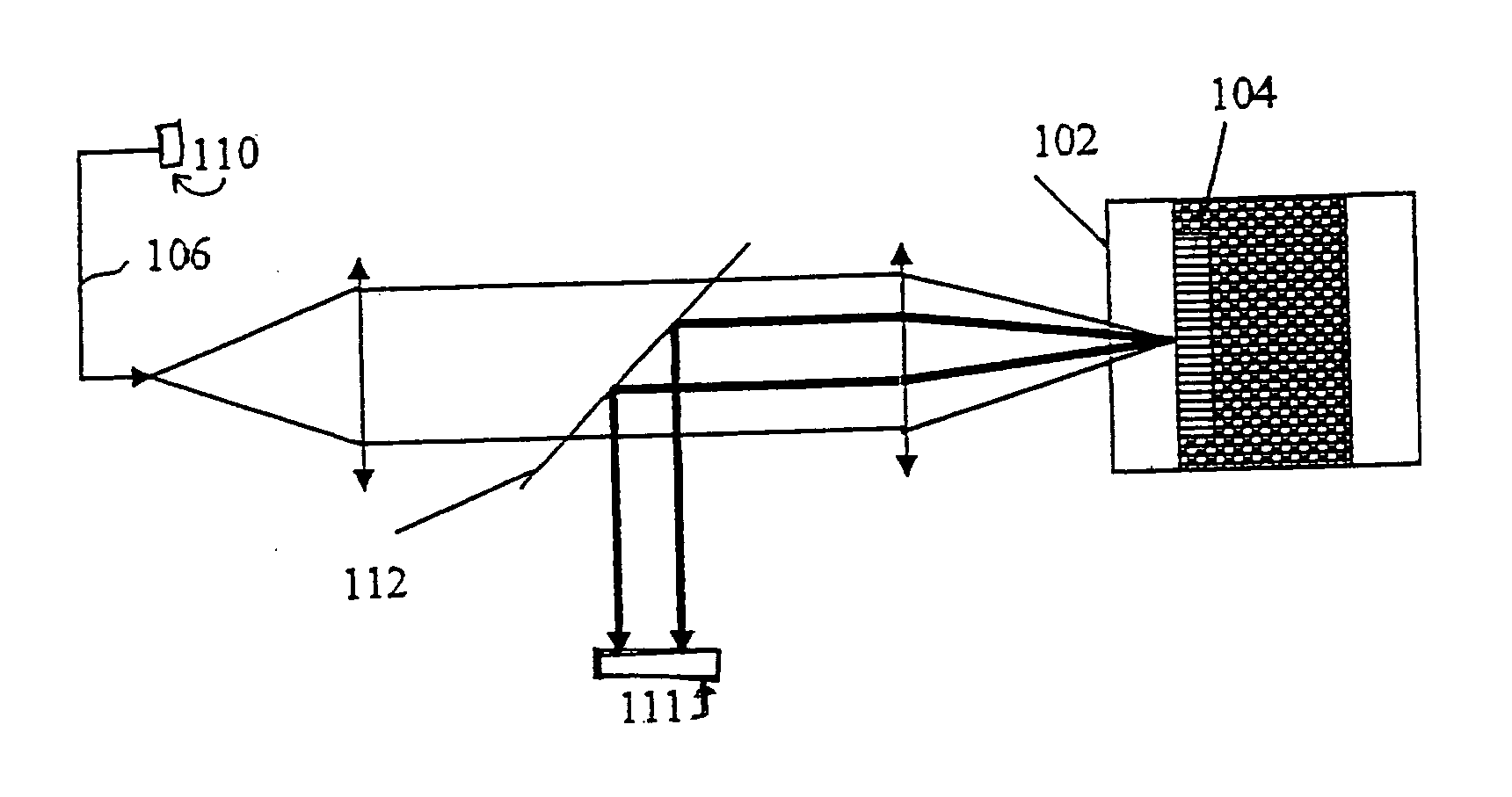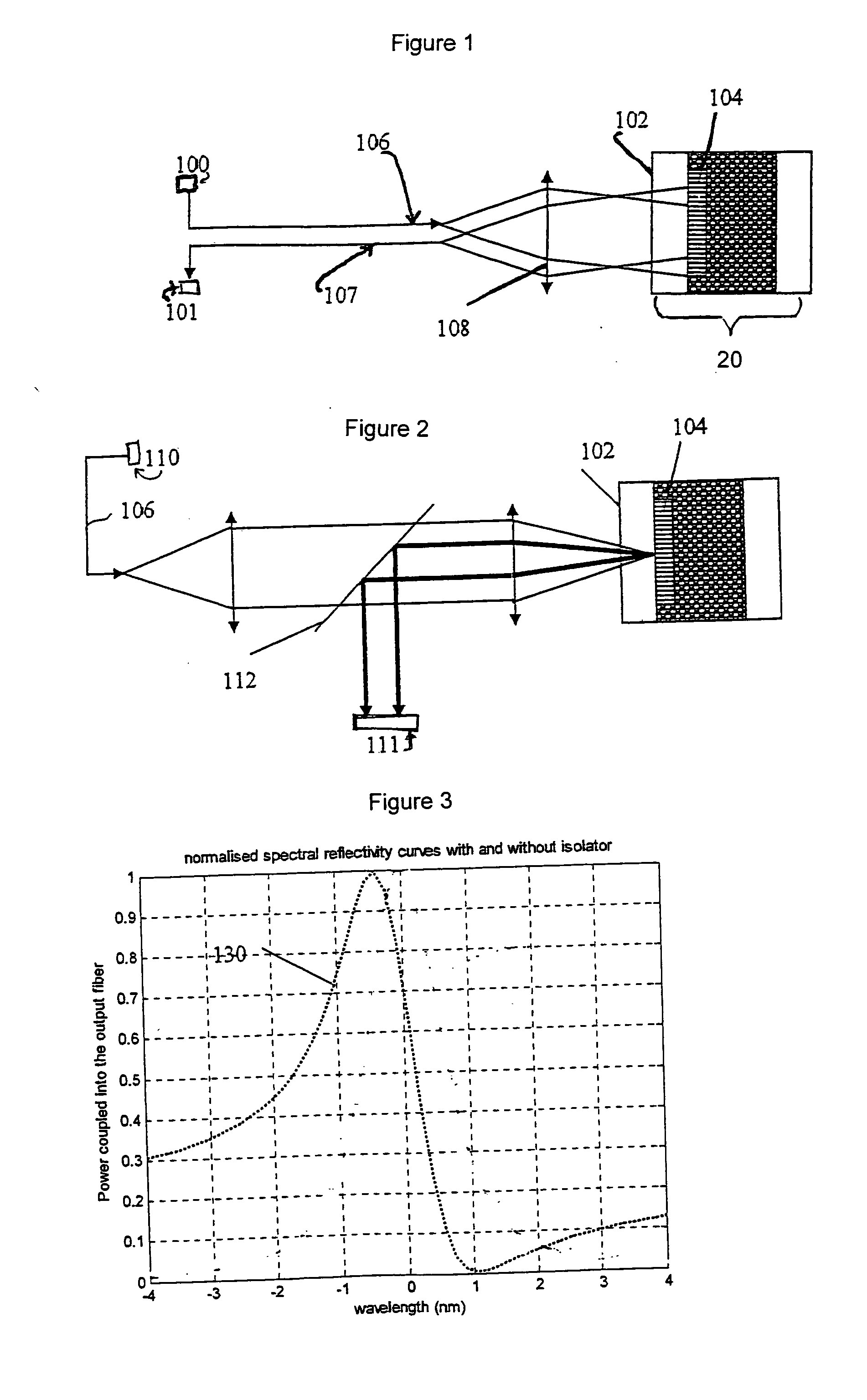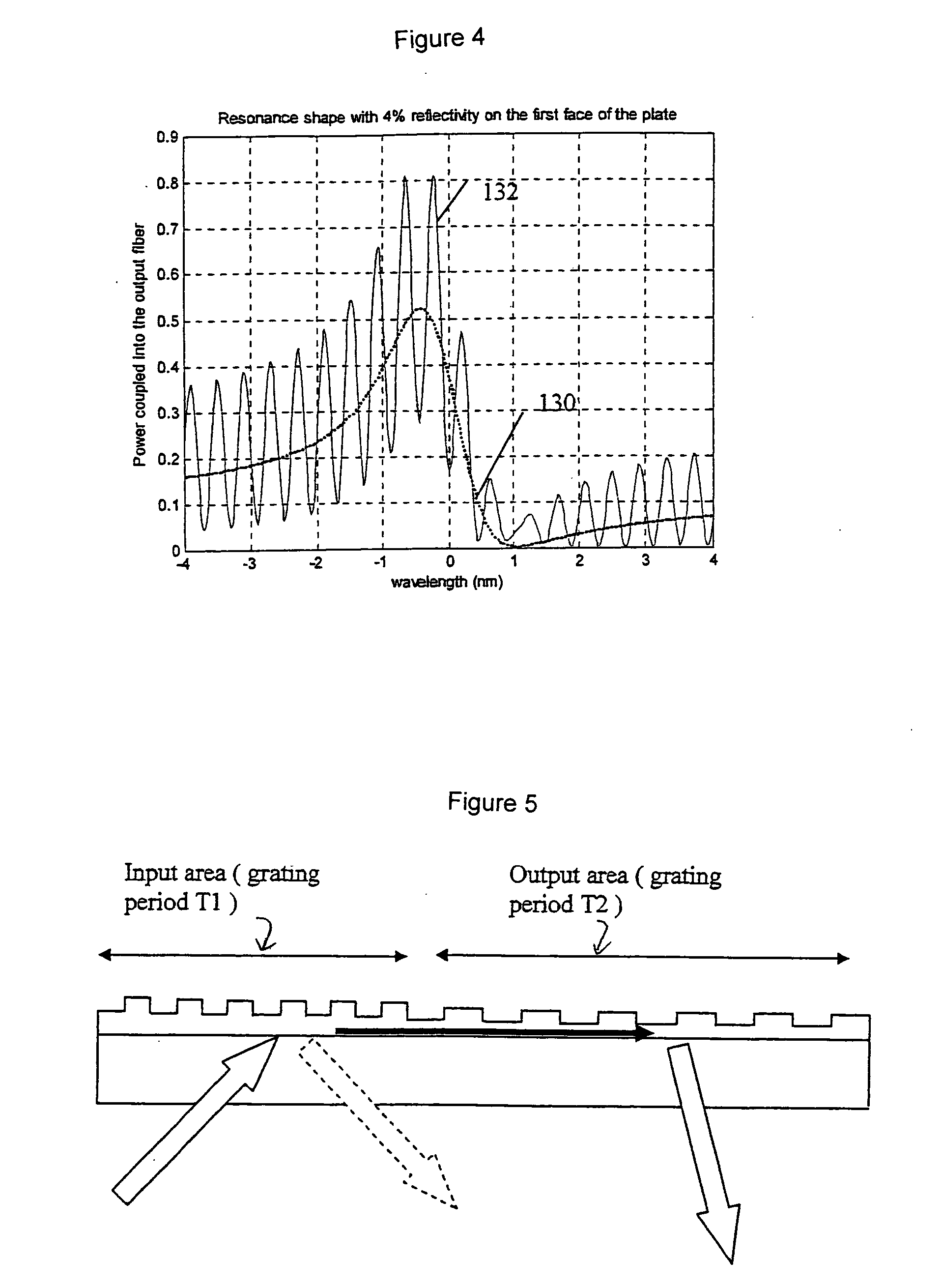Optical interrogation systems with reduced parasitic reflections and a method for filtering parasitic reflections
a technology parasitic reflection, which is applied in the field of optical interrogation system, can solve the problems of reducing the quality of the detected resonant signal, reducing the signal to noise ratio, and reducing the accuracy of the angular or wavelength measurement of the resonan
- Summary
- Abstract
- Description
- Claims
- Application Information
AI Technical Summary
Benefits of technology
Problems solved by technology
Method used
Image
Examples
example 1
[0059] The above described embodiments of the present invention (shown in FIGS. 7 and 10) utilize an optical isolator 105. The optical isolator 105 filters parasitic reflections without requiring any spatial or angular separation between the input beam (incident on the GCW) and the collected output beam (reflected by the GCW). More specifically, FIGS. 7 and 10 show one exemplary implementation of the isolator 105 into a wavelength sensing optical interrogation system (FIG. 7), or into the optical interrogation system that utilizes an angular interrogation (FIG. 8). In these two embodiments of the optical interrogation systems the optical isolator 105 is a polarization sensitive isolator.
[0060] An example of the polarization sensitive isolator 105 is shown schematically in FIG. 11. According to this embodiment, this isolator includes a linear polarizer 120 and quarter waveplate 121. The linear polarizer 120 has its polarization axis 122 oriented at 45 degrees relative to the polariz...
example 2
[0062] Another example of the isolator 105 is shown schematically in FIG. 12. The isolator 105 of this example includes a polarizer 120 and a Faraday rotator 125. As the incoming light beam (propagating toward the GCW) passes through the polarizer 120 it becomes linearly polarized. After the light beam passes trough the Faraday rotator 125 its polarization is still linear, but the polarization vector 126 of the propagating light is rotated by 45 degrees. After the reflection, the polarization orientation (polarization vector) for the light associated with all parasitic reflections is not changed until this light propagates again trough the Faraday rotator, which again rotates the light's polarization axis by 45 degrees. Since the polarization axis of this light is now rotated by 90 degrees with respect to the axis 122 of the polarizer 120, parasitic reflections are filtered by the polarizer 120.
[0063] If the grating of the GCW 104 is oriented either along or perpendicular to the di...
example 3
[0065] This exemplary optical isolator (FIG. 14) is similar to the optical isolator of Example 1. However, the polarizer 120 of the isolator 105 is made of a birefringent beam displacing polarizing material, for example, YVO4, quartz or any other material presenting a large birefringence Δn, to separate the incoming beam into two differently (linearly) polarized input beam components. Having two input light beams instead of one light beams allows us to simultaneously interrogate at least two GCWs 104. This is illustrated schematically in FIG. 14. FIG. 14 shows that the non polarized beam input A′ is separated, by the polarizer 120, into two beams B1 and B2. The input light beams B1 and B2 have linear polarizations that are perpendicular to one another, which become circularly polarized after crossing the waveplate 121. The two GCWs 104 have slightly different effective refractive indices (for example, due to slightly different thicknesses), so that they couple in and then reflect li...
PUM
 Login to View More
Login to View More Abstract
Description
Claims
Application Information
 Login to View More
Login to View More - R&D
- Intellectual Property
- Life Sciences
- Materials
- Tech Scout
- Unparalleled Data Quality
- Higher Quality Content
- 60% Fewer Hallucinations
Browse by: Latest US Patents, China's latest patents, Technical Efficacy Thesaurus, Application Domain, Technology Topic, Popular Technical Reports.
© 2025 PatSnap. All rights reserved.Legal|Privacy policy|Modern Slavery Act Transparency Statement|Sitemap|About US| Contact US: help@patsnap.com



